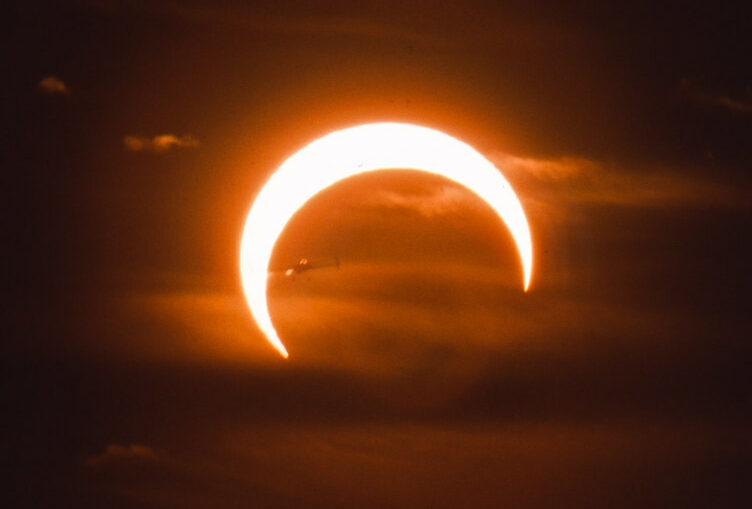
An annular eclipse of the Sun will occur on December 26, 2019 (5 Pausha, 1941 Saka Era).
From India annular phase will be visible in the morning after sunrise from some places within a narrow corridor of Southern part of the country (parts of Karnataka, Kerala & Tamil Nadu) and it will be seen as partial solar eclipse from the rest part of the country, according to India’s Earth Science Ministry.
The narrow corridor of annular phase of the eclipse will pass through the southern part of the country through certain places like Cannanore, Coimbatore, Kozhikode, Madurai, Mangalore, Ooty, Tiruchirappalli etc.
In India, the obscuration of the Sun by the Moon at the time of greatest phase of the annular eclipse will be nearly 93%.
As one moves towards the north and south of the country from the annular path, the duration of the partial eclipse decreases.
The ministry in a statement released on 17th December said, obscuration of the Sun by the Moon at the time of greatest phase of partial eclipse will be around 90 percent in Bangalore, 85 percent in Chennai, 79 percent in Mumbai, 45 percent in Kolkata, 45 percent in Delhi, 42 percent in Patna, 33 percent in Guwahati, 70 percent in Port Blair, 35 percent in Silchar etc.
Considering the Earth as a whole the partial phase of the eclipse will begin at 8 h 00 m IST.
The annular phase will begin at 9 h 06 m IST. The annular phase will end at 12 h 29 m IST. The partial phase will end at 13h 36 m IST.
The annular eclipse of the Sun is visible within a narrow corridor in the northern Hemisphere near to equator.
The annular path passes through Saudi Arabia, Qatar, Oman, UAE, India, northern part of Sri Lanka, Malaysia, Singapore, Sumatra, and Borneo.
The Moon’s penumbral shadow produces a partial eclipse, visible in the region covering Middle East, North Eastern Africa, Asia except North and Eastern Russia, North and Western Australia, Solomon Island.
The next solar eclipse will be visible from India on June 21, 2020.


































































































